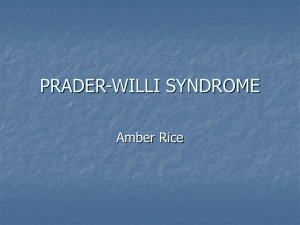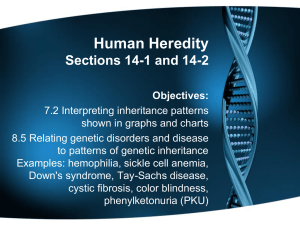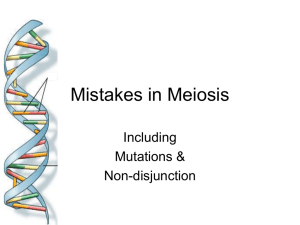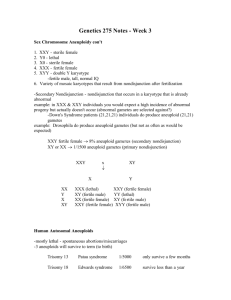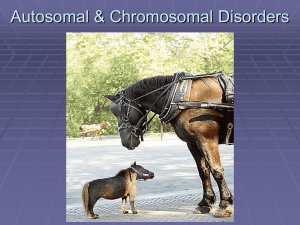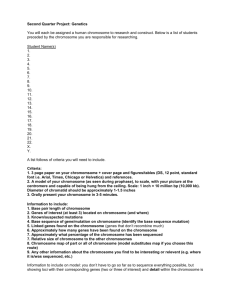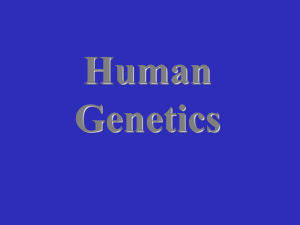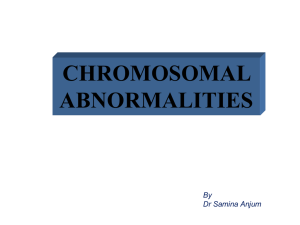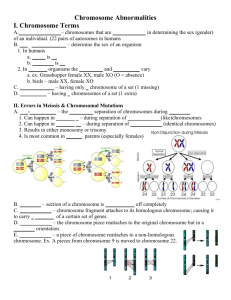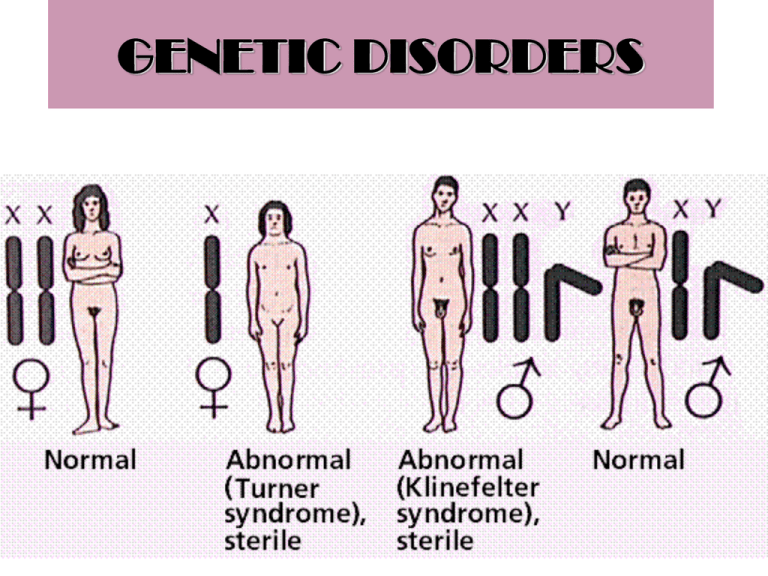
GENETIC DISORDERS
Mutation –change in a gene resulting in change in
genetic information
•
•
•
•
may be spontaneous or caused by a mutagen
Somatic mutations are usually not noticed
Gametic mutations are more severe
Not all mutations are bad!
SINGLE-GENE DEFECTS
• Misplacement, insertion or deletion of one base pair
• May result in incorrect amino acid
• May result in shift of reading frame
• Congenital Defects:
–Visible at birth(club foot, spina bifida,
congenital heart defects)
–Caused by environmental factors (FAS,
German measles)
• Inherited
–Sickle Cell Anemia, Cystic Fibrosis
INVERSIONS
• Part of chromosome is
flipped around 180° from
its normal orientation.
• Happens when
chromosome breaks
occur.
• Broken piece may
reattach, but not
necessarily in the same
orientation as before
TRANSLOCATIONS
• Detachment of a segment of a
chromosome, and reattachment
to another non-homologous
chromosome.
• Some genes wind up on a
completely different
chromosome
ANOMALIES OF
CHROMOSOME NUMBER
• Polyploidy is common in
plants
• Gametes don’t reduce
chromosome #
• Result in cells with
multiple copies of the
genome
ANOMALIES OF
CHROMOSOME NUMBER
• Aneuploidy – more
common in humans
• Usually lethal before
or shortly after birth
• Monosomic and
Trisomic
NONDISJUNCTION
• Occurs when
homologous
chromosomes fail to
separate after synapsis
• Most nondisjunction
events are lethal to the
fetus
DOWNS SYNDROME
• Results from a third
copy of chromosome
21
• Called a trisomy
• Individuals have 47
chromosomes in
every body cell
SEX CHROMOSOME
NONDISJUNCTION DISORDERS
TURNER SYNDROME
• Occurs when nondisjunction causes a gamete
to have a missing sex chromosome (X O)
• Sterile females
• 1 in 10 000 live births
SEX CHROMOSOME
NONDISJUNCTION DISORDERS
KLINEFELTER’S SYNDROME
• Genotype of XXY (extra sex chromosome)
• Sterile males, breast development
• 1 in 800 live births
SEX CHROMOSOME
NONDISJUNCTION DISORDERS
XY
X
O
XX
½
gamete lacking a
sex chromosome
XX
½
gamete formed
from
nondisjunction
½
XO ¼
Turner’s
syndrome
Y
½
YO ¼
Will not
survive
(LETHAL
CONDITION)
XXX ¼
XXY ¼
“super female” Klinefelter’s
usually normal syndrome

